How would it be to live in Arctic winter, when the temperature can go below -50 °C ? Sun can’t be seen more than six months in that part of world. Most of the living beings would not be able to survive in that extreme cold. But with millions years of evolution some of the rare and extra-ordinary species like the polar bear, arctic fox, arctic wolf , seal , arctic hare etc. have made themselves prepared to live in one of the toughest places on earth. And for predators to live there, they would have to do something more than extra-ordinary to survive with limited amount of available prey! Only three top predators are able to survive here with their unique skills which are
- Polar Bear,
- The arctic wolf,
- The arctic fox.
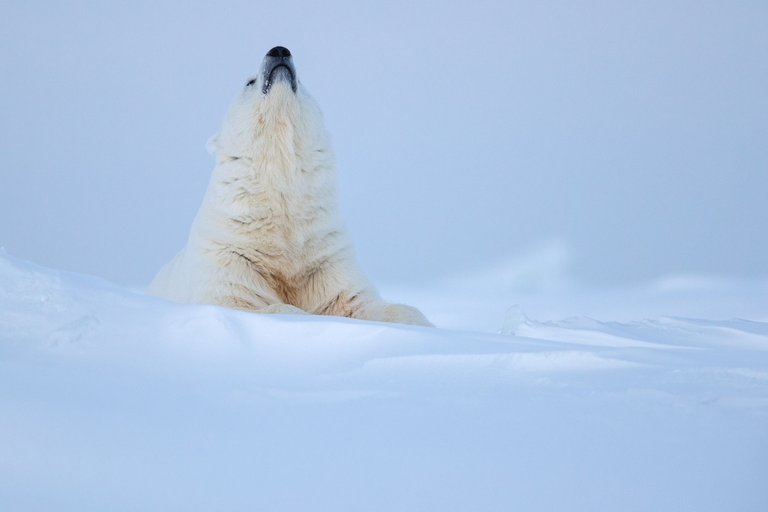
To live here around the year these hunters must make sure they are using the good times best in order to survive when the odds are against them during the tough time. All these predators in Arctic must face one fundamental problem which is not the cold, but thee endless cycle of change. Arctic faces the greatest event of seasonal change in our planet, a change that rules the life of world's only sea-ice hunter. Here i will try to discuss about these three incredible predators, their life style, their nature, their survival when the odds are extremely against them and how fast they have to change themselves in order to survive.
Polar Bear
When we imagine something about arctic life or arctic nature, the first thing that come to our mind is Polar Bear(often known as Sea Bear). Polar bears are one of the few marine mammals. They spend most of their life in or around water(ocean).They are able to swim long distances in cold waters without a break and are also fast movers on the land. Usually they don't waste their energy with moving fast. They walk 5/6 kmph through the sea ice, though they can reach as much as 40 kmph Polar bears are the largest type of bear.It s believed by scientist that Polar Bear had evolved 5 million years ago from their cousin brown bear.
Real arctic kingdom belongs to mighty polar. With million years of evolution these amazing creatures make themselves the true king of arctic. Arctic winter isn’t any struggle for them, actually arctic winter is blessing for them. Polar bear is world’s only sea ice hunter. They walk thousands miles across the long arctic frozen sea for hunting. To track down there hunt, they use their incredible sense of smell. By using their smelling power they can detect their prey as far as 1.6km (1mile) distance away and buried under 1m(3feet) of thick ice.
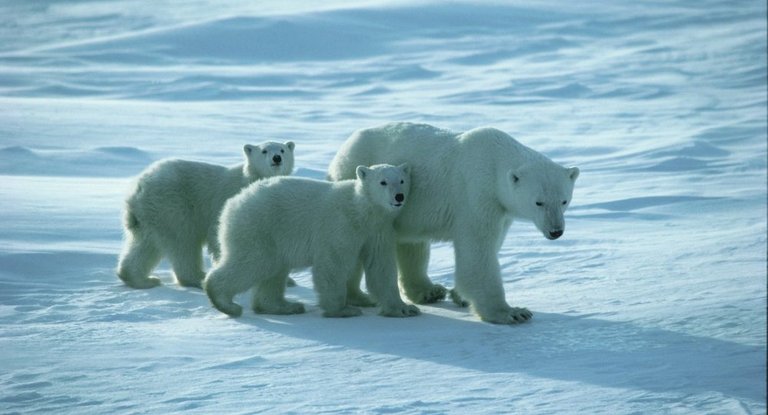
Mother Bear is wandering over the frozen sea ice with her cubs|Source
Seals are bear’s most important prey. At the start of spring they come to ice to give birth their pubs. They have a ‘breathing hole’ in the ice and can’t stay far from their breathing hole. That makes it easy for the bear to stalk their prey. But windows of opportunity don’t last longer. Soon the ice started to melt. Seal pubs grow large enough to swim and disappear into the water. And in water polar bear doesn’t stand a chance against seal. Only one out of five stalks is successful at the end of spring in arctic.
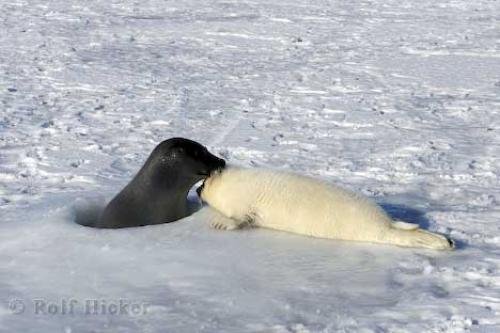
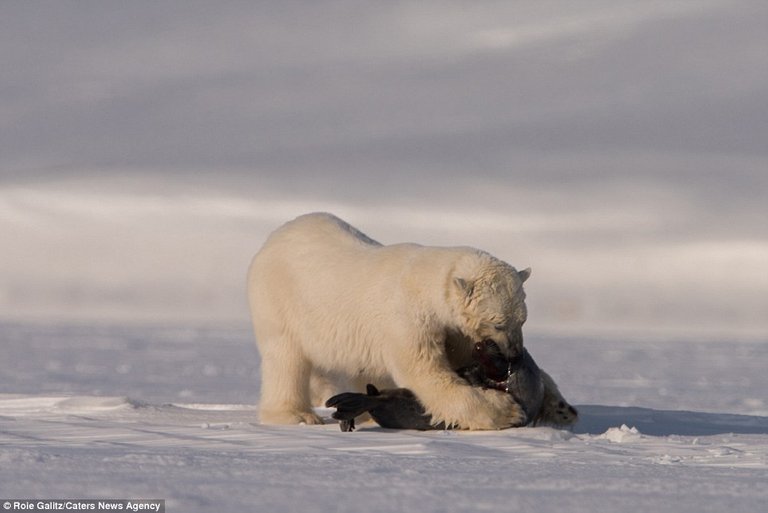
As three million square miles of ice being already melted, by July time is running out for polar bear. Advantages have been swung away from bear. Seal will have too many escape route while resting on the ice and will able to find themselves easily in water. Once the seal is in water, it’s as good as lost. Though polar bear is a good swimmer, it doesn’t stand a chance against seal in water. At that time of year polar bear’s success rate is reduced to only once in twenty hunting attempts. Because of global warming the duration of winter is already decreased almost a month. As a result the starving period of polar bear is increasing every year.
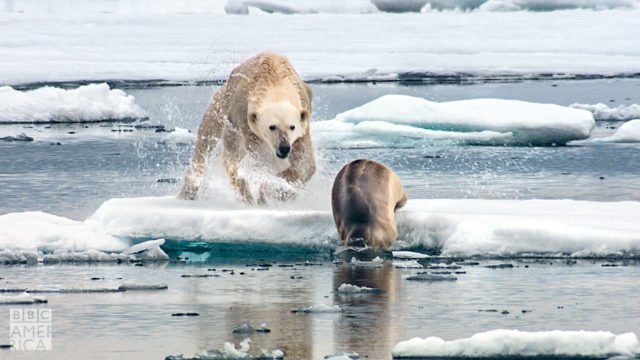
During the end of summer, the bears that were walking over the sea ice all over winter, are now almost prisoner on beaches. The seal are fishing out of sea. No one, but only gigantic walrus can be seen with Bears on beaches. They weigh two tons and armed with two long tusks. So it’s almost impossible for bear to hunt down walrus. They just need to wait eagerly for ice to be returned.
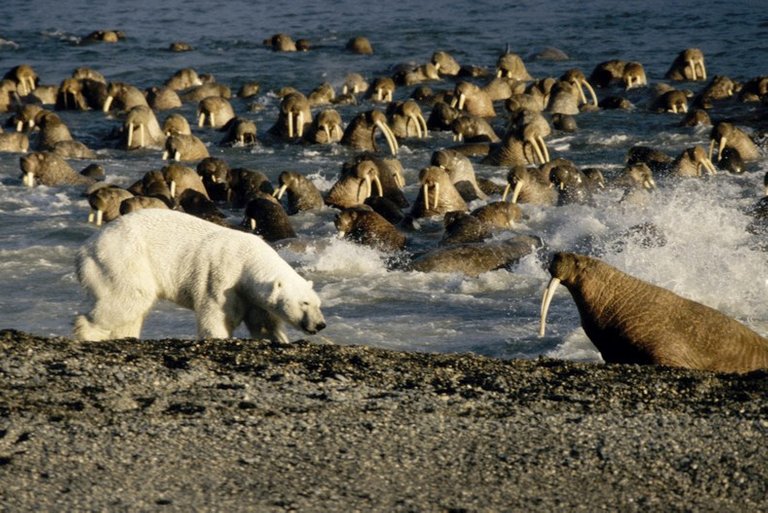
Though some bear refuse to spend idle summer. This bear in picture is doing something really extraordinary. It’s hard to imagine a place less suited to a polar bear than 300 m up on a crumbling sea cliff. But the sounds and scents of a bird on the cliff, can be irresistible for starving bear at the end of summer which can force him to risk his life. And only available foods he can get are few eggs and chicks. But Polar Bear is ready to gamble his own life to get rid of hunger where the odds are really against him! The polar bear will remain on cliff until the end of summer. He will feed, sleep and live among his prey.
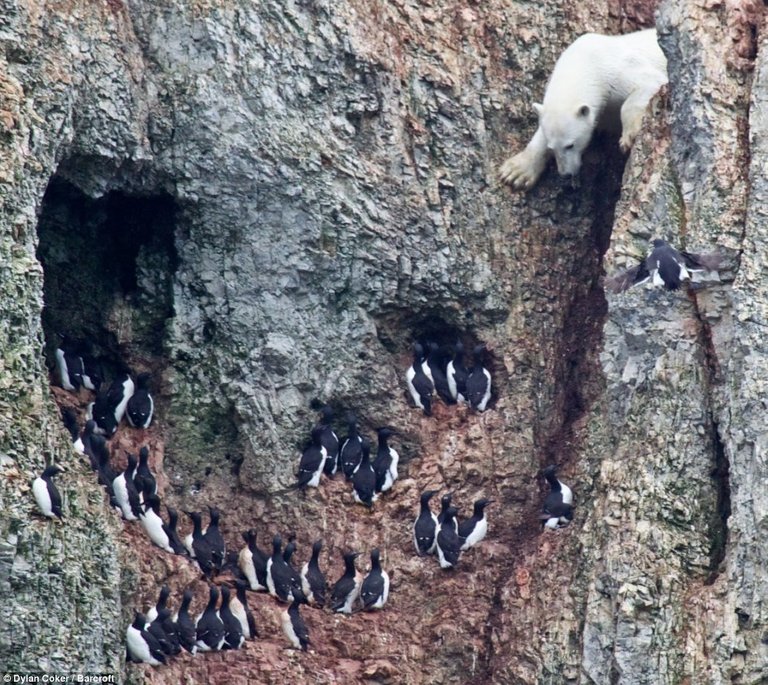
Arctic Wolf
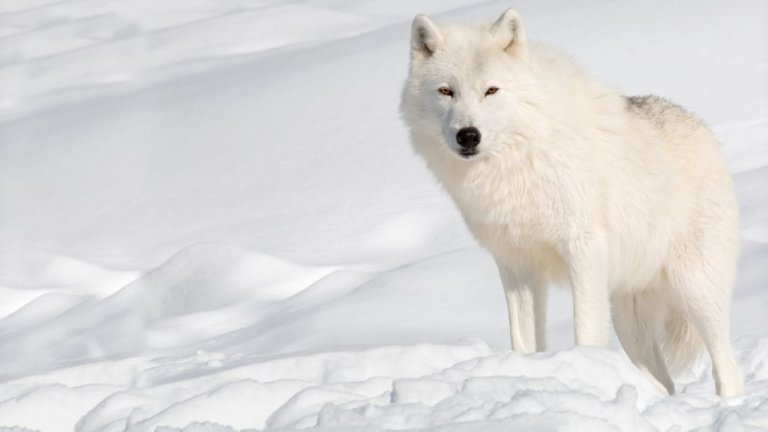
The Arctic wolf also known as Polar wolf or white wolf. It is a subspecies of Grey Wolf. Maybe it s hard to believe that Arctic Wolf and pet dog are same species ! In general Arctic wolf can be 80-85 cm in height and 3-6m in length. It's weight vary from 30-80kg for adult male while adult female can be 23-55 kg . It has strong jaws filled with 42 sharp teeth. These teeth are perfectly designed to tear flesh and crush bones. Arctic wolf has very good sense of hearing, smelling and eyesight, which are used for identification of potential prey.Arctic wolf lives in a pack of 5 to 7(occasionally up to 20) members. Wolf Packs use urine and scent to mark the borders of their territories. With their cooperative hunting strategy, Arctic wolves can easily kill very large prey. Lifetime of a wild arctic wolf can be as much as 7-10 years, while in captivity it can live as much as 18 years.
At the end of the spring or beginning of summer, arctic’s best hunting spot is no longer out on the frozen ocean but, on the land that surround it which is territory of different kind of hunter. The good time finally arrive for the arctic wolf after extreme winter. Arctic hare,muxk oxen , caribou etc. are some of the most important preys for Arctic Wolves.
Arctic hares , like the Arctic wolf stay white throughout the short summer which make them easier for wolf to spot. But with having ability to run 40 miles per hour(approximately 60kmp) , hares are quick enough to beat wolf in a longer chase! But to give little advantage to the wolf, nature provides hares with their young pubs. Mother hare needs to risk her life to feed her leverages everyday for few minutes. When Wolf is spotted mother hare run for her life leaving behind her leverets which makes sense as her young leverets are camouflaged with nature. They are nearly impossible to spot, even though wolf are in their range. Leverets just need to calm enough to keep their nerves. Even though it s easy for leverets get panicked while wolf are close, they can still give the wolf a run for their hunts. This kind of hunting by wolves may appear an unfair contest between predator and prey. But for every single hunt , more than hundreds leverets remain alive.
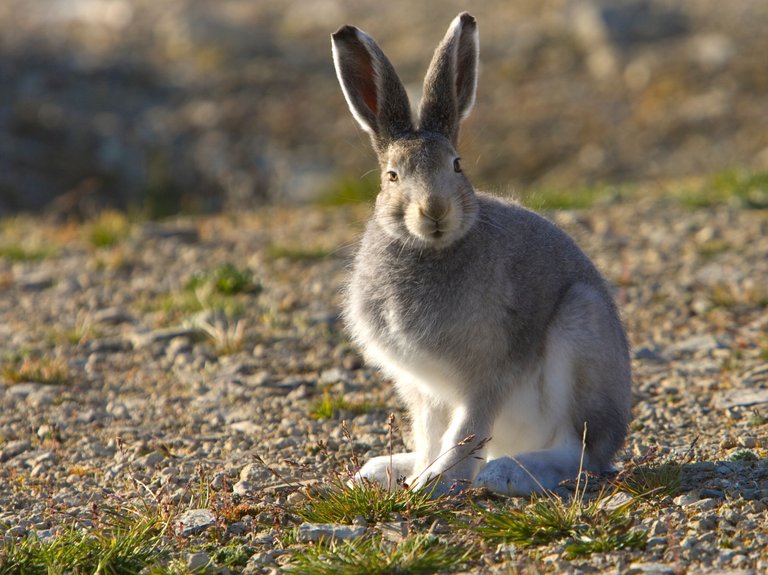
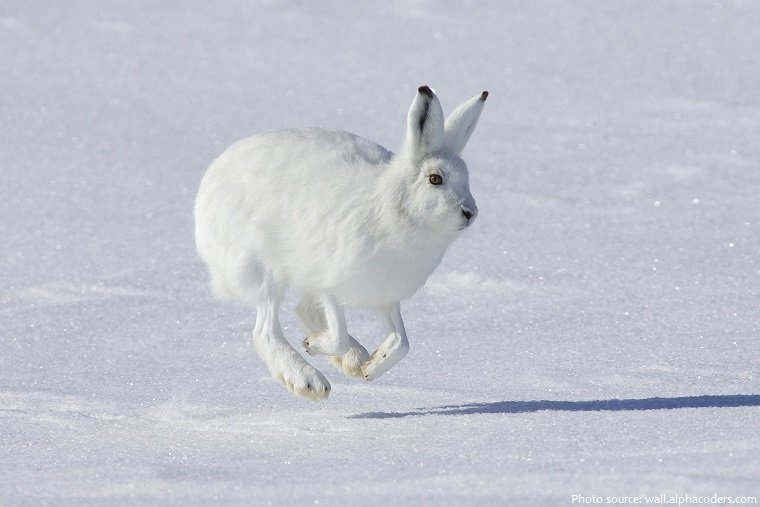
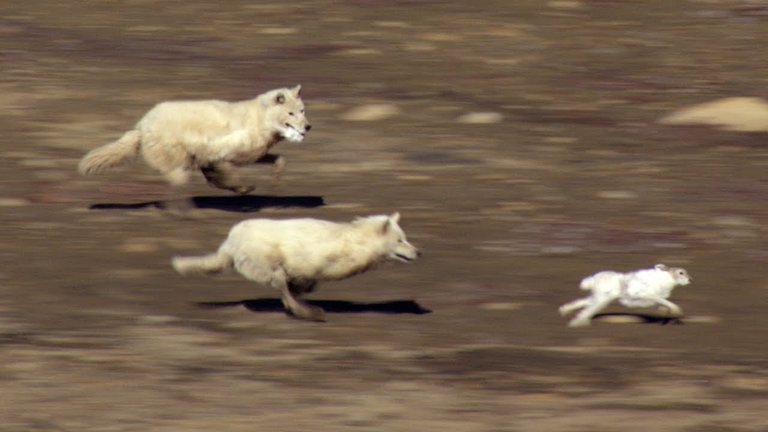
Food in north is really hard to find. Wolf pack must search hundreds of square miles to be successful. And they must work together as a pact. But to survive , few leverets are not enough for wolf packs. They need bigger prey. The largest animal in their territory Musk oxen. A single bull weighs more than the entire pack put together. This mighty oxen are armed with horns. Usually, the alpha female lead the hunt. They run directly at the herd of oxen. The aim is to panic them. Stampeding herd might leave a calf behind them. Sometimes this tactics works, though most of the mighty oxen form a protective ring around the calves. And there is no way in for the wolf pack. The alpha female must call off the hunt to avoid the risk of being seriously harmed or even being killed by oxen.
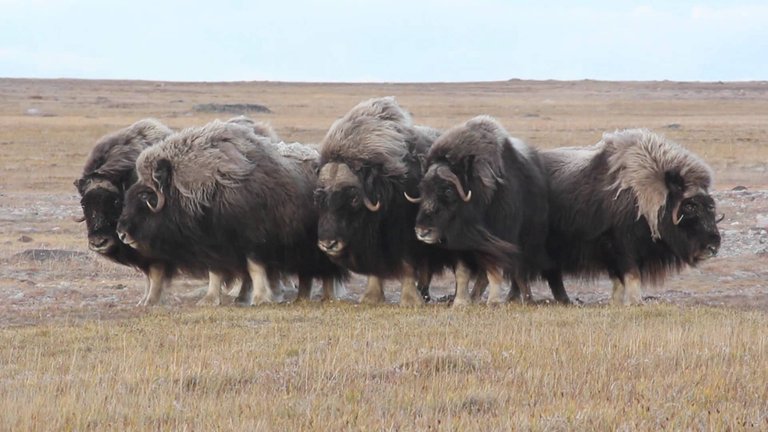
But the search for potential prey must go on , if they are to stand a chance surviving the coming winter. The wolf pack must feed well now, even though if put their life at risk. A lone bull is the most dangerous prey of all. One blow from its horns could easily kill a wolf. But wolf are now ready to gamble their life for a meal. It may takes hours to hunt down the bull. But numbers are in wolf’s favor and if one wolf get tired , other wolf can take the lead. And this kind of kill will feed the whole wolf pack for almost a week.
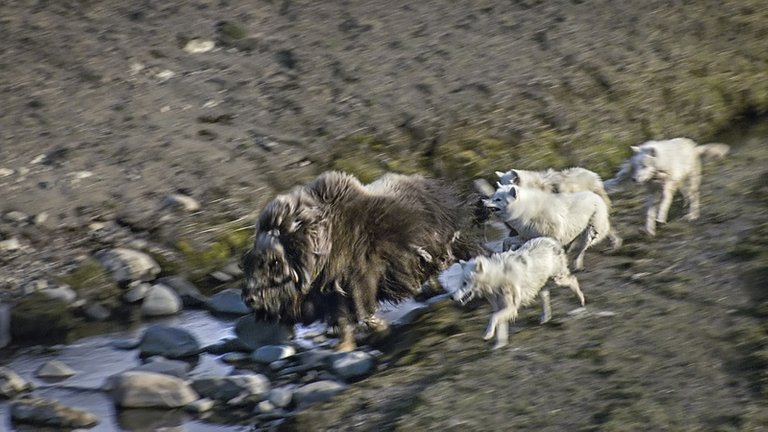
Arctic Fox
Arctic Fox, commonly known as white fox, polar fox or snow fox, is a small fox which is well adopted to living in cold environments. Arctic Fox have ability to survive a temperature difference of almost 100°C during the cycle of seasons. Arctic fox doesn’t hibernate in the winter. They stay active all over the year. During the winter it stays white , while during the summer it is brown allowing it to hide better in the earthy tones of its habitat. Arctic Fox can live only 3-4 years in the wild.In general, Arctic fox preys on many small creatures such as lemmings, voles, fish, waterfowl and seabirds.
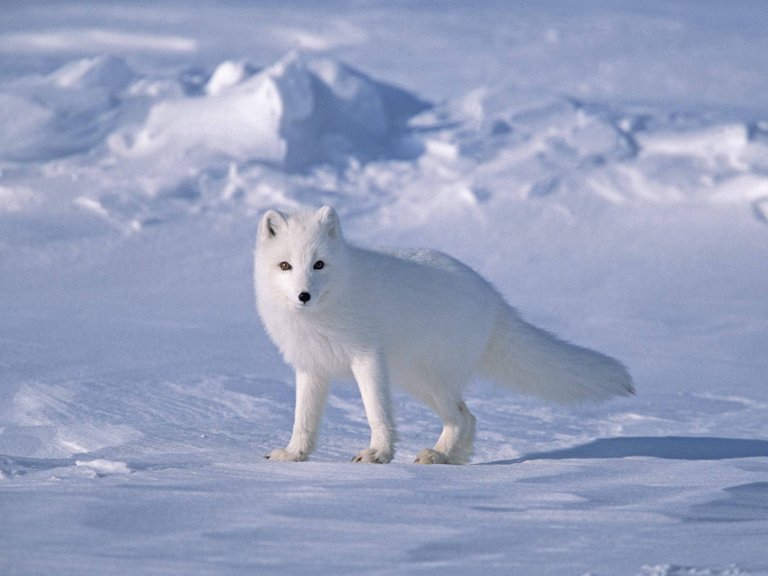
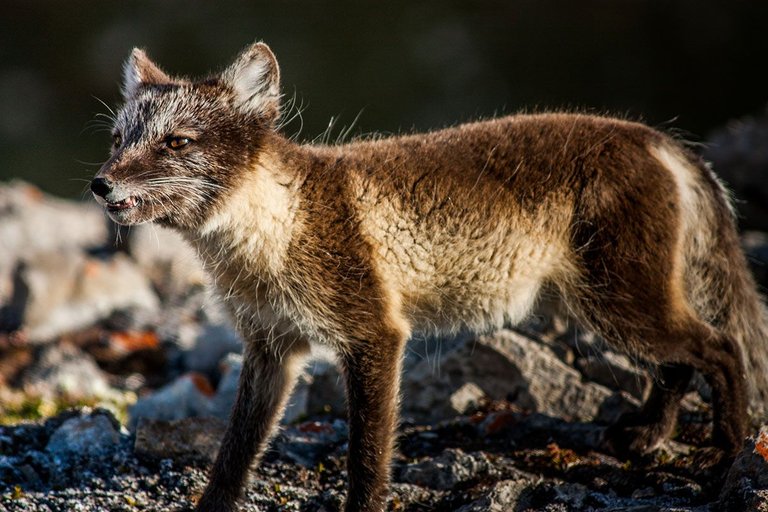
Arctic winter is not really a good time for foxes. They depends on scavenging. Like other arctic predators, fox too have a good sense of smell. Usually they follow the Polar Bear for food during winter. If hunting is good, Polar Bear sometimes leave a meal behind. Arctic Fox has amazing hearing power. With using that skill they can hunt lemmings burried in deep beneath the snow. Here is a video that will show their amazing skill of hunting.
During the end of spring or beginning of summer, windows of opportunity finally arrived for arctic fox. After spending the winter scavenging , the foxes can now finally make a life with dignity(self-hunting).
To make a living in arctic, Fox must use it’s famous foxy cunning. To make a successful hunt he must use all possible technics available. During the summer Arctic becomes home of million of birds. Though there is no tree in Arctic birds make their nest high on the sea cliffs almost out of fox's reach. Well, not all of the birds get opportunity to make nest out of fox' reach. Some of the birds are forced to make nest in the scree slopes at the base of the cliffs. Those birds mainly depend on their camouflaged against fox. They hide deep among the sea-stones which seems to work. And again if some how fox find the birds , they can fly away. But if birds can hide among the sea stones, so does fox. It wait silently for the opportune moment to strike. Sometimes addition help by other hunting birds are provided to fox. With little outside help fox can successfully hunt down plenty of bird for it's entire family.
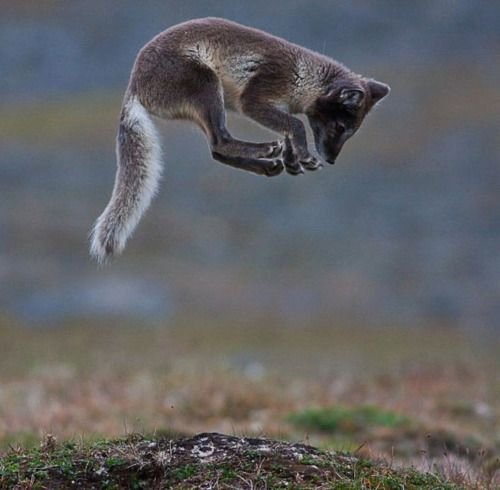
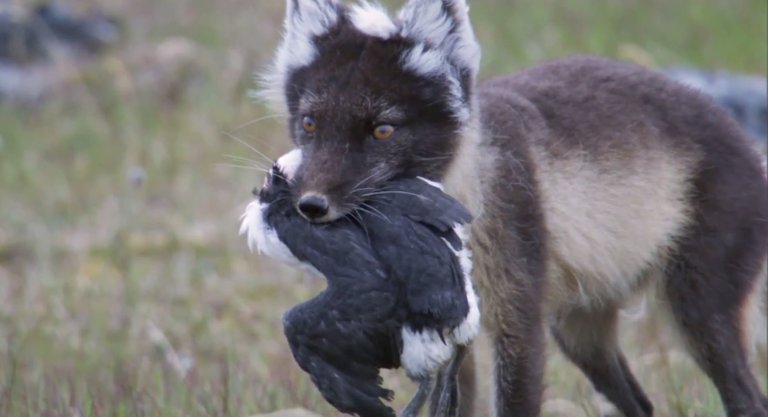
Fox are really smart animal. It has been seen by several photographers fox are storing food such as bird's eggs in a safe place in order to gain food during their tough. Thus Arctic Fox uses Arctic cold weather as a natural refrigerator.
As an effect of global warming the climate that is given to universe by mother nature is changing rapidly. Winter in arctic becoming shorter, while summer becoming longer. Thus the Polar Bear is getting less and less feeding time which causes a significant amount of their number is decreasing. So the question rises, after millions of year ruling the ice has the polar bear finally been going to meet their fate or with evolution they will find a way to adopt with the change of arctic? According to scientists, all species are important and help keeping the ecosystem balance directly or indirectly. We, human being can't consider ourselves separate from natural. Everything in nature is interconnected and when one thing is out of balance, it causes the entire organism to be weakened. So, in order to give these amazing creatures at least a chance to survive we human being must make sure to decrease the effect of global warming as much as possible for our own good!
Reference:
[1]https://en.wikipedia.org/wiki/Polar_bear [2]https://en.wikipedia.org/wiki/Arctic_wolf [3]https://en.wikipedia.org/wiki/Arctic_fox [4]https://en.wikipedia.org/wiki/Arctic [5]http://www.softschools.com/facts/animals/arctic_wolf_facts/2309/ [6]https://www.nationalgeographic.com/animals/mammals/a/arctic-fox/ [7]https://www.worldwildlife.org/species/polar-bear

That's all from me. Thank you for reading the post. And please, let me know through comments or upvotes how do you like it! Until my next post -------